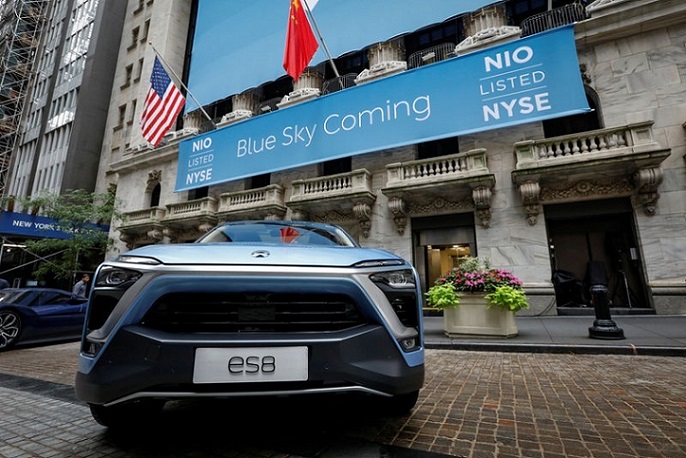By Geoffrey Smith
Investing.com -- Chinese electric vehicle maker Nio (NYSE:NIO) said its net loss widened sharply in the third quarter as a sharp rise in input costs hurt margins, adding to the burdens of an expensive ramp-up of production capacity.
The group said it expects the current quarter to show a big acceleration in revenue, as its ET5 sedan hits the showrooms in big volume for the first time. The company expects to deliver between 43,000 and 48,00 vehicles in the current quarter, which would represent an increase of some 50% from 31,607 in the third quarter.
That's expected to translate into revenue of between $2.44 billion and $2.70B, an increase of as much as 94% from a year earlier.
Founder and chief executive William Bin Li said the company has been working "closely" with supply chain partners to speed up production and delivery timetables for the car which, with a range of 621 miles, is seen as a formidable competitor to Tesla's (NASDAQ:TSLA) Model 3.
However, the company was less forthcoming about the outlook for its profitability, which suffered from higher input costs and sporadic interruptions to its supply chain and distribution due to COVID-19 lockdowns in the third quarter.
Revenue rose 33% on the year, slightly outpacing a 30% rise in deliveries, but the group's margin on vehicle sales continued to fall to 16.4%, from 16.7% three months earlier, due largely to the higher cost of batteries. Operating losses consequently widened nearly fourfold to $544M, while the net loss attributable to shareholders widened 45% to $582M.
The results included chunky non-cash items related to stock-based compensation, which amounted to 6c per ADS. Nio's stock has fallen by nearly 80% this year, as COVID lockdowns have delayed an expected surge in Chinese car sales, while massive rises in the cost of battery metals have frustrated companies' abilities to bring prices down to truly mass-market levels, slowing the pace of adoption by consumers.
Chief financial officer Steven Wei Feng said that the market environment was "challenging" but that the company had still achieved "solid top-line growth."
